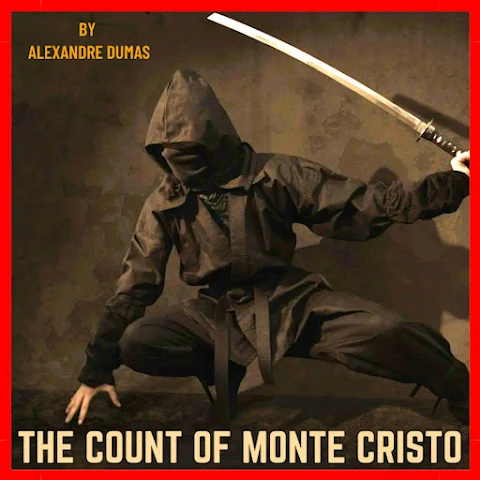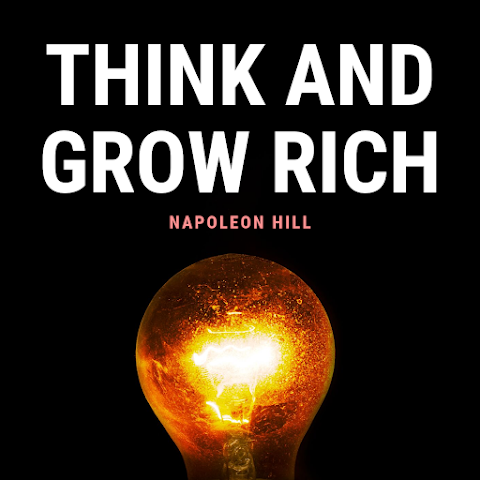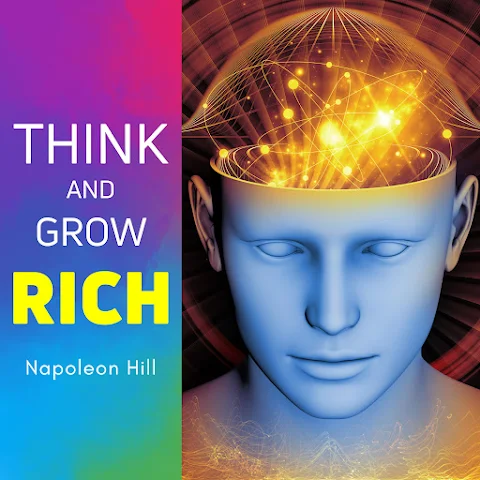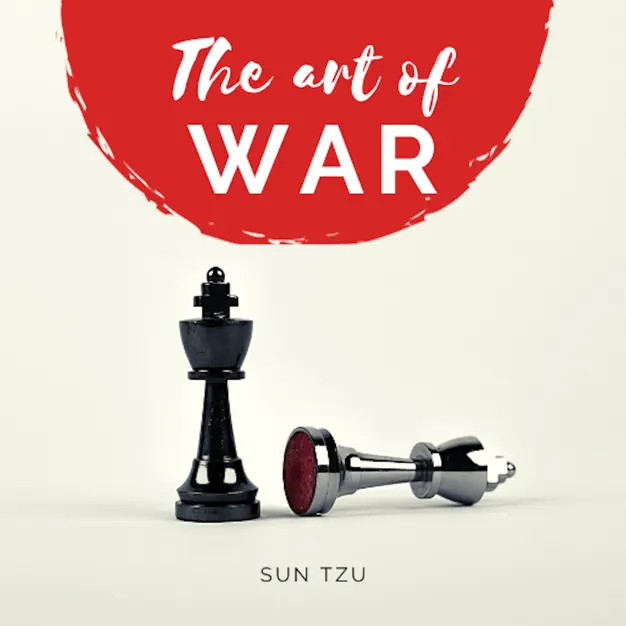The Count of Monte Cristo: A Timeless Masterpiece of Revenge and Redemption
Experience the Story in Audio
Discover the power of this masterpiece through our carefully crafted audiobook version. Let the story of revenge, redemption, and justice unfold in your ears.
Listen on SpotifyIn the vast landscape of literary masterpieces, few novels have captured the imagination and hearts of readers quite like Alexandre Dumas' "The Count of Monte Cristo." Published in 1844, this epic tale of revenge, love, and redemption continues to enthrall readers nearly two centuries later. Today, we're diving deep into what makes this magnificent work a cornerstone of literary excellence and why it remains profoundly relevant in our modern world.
A Tale of Betrayal and Vengeance
At its core, "The Count of Monte Cristo" follows the extraordinary journey of Edmond Dantès, a young sailor whose life is shattered by a conspiracy of jealousy and ambition. On the eve of his wedding to the beautiful Mercédès, Dantès is falsely accused of treason and imprisoned in the notorious Château d'If. What follows is an intricate narrative of transformation, as our protagonist evolves from an innocent young man into the mysterious and wealthy Count of Monte Cristo, orchestrating an elaborate plan of revenge against those who destroyed his life.
But to label this merely as a revenge story would be to undersell its profound complexity. Dumas weaves a tapestry of interlinked narratives that explore the depths of human nature, the price of vengeance, and the possibility of redemption. The plot, spanning decades and crossing continents, is a masterclass in storytelling that keeps readers spellbound until the very last page.
Literary Excellence and Craftsmanship
What sets "The Count of Monte Cristo" apart is Dumas' exceptional storytelling prowess. The novel showcases his ability to balance intricate plot developments with deep character studies. Each character, from the protagonist to the supporting cast, is carefully crafted with distinct motivations, flaws, and arcs that intersect in meaningful ways.
The narrative structure itself is a testament to Dumas' genius. He employs multiple perspectives and timelines, weaving them together with the precision of a master craftsman. The pacing alternates between philosophical contemplation and heart-pounding action, creating a rhythm that keeps readers engaged throughout the novel's considerable length.
Thematic Richness
The novel's thematic depth is truly remarkable, exploring universal themes that continue to resonate with readers today:
Justice and Vengeance
At its heart, the novel grapples with the complex relationship between justice and revenge. Dantès' transformation into the Count raises profound questions about the moral implications of seeking vengeance and whether justice can truly be served through personal retribution. As the novel reminds us, "Hatred is blind; rage carries you away; and he who pours out vengeance runs the risk of tasting a bitter draught."
Identity and Transformation
The Count's various personas - from the naive sailor Dantès to the sophisticated Count of Monte Cristo - explore the malleability of identity and the impact of experience on character. As the Count himself declares, "I am not an Italian, or a Frenchman, or a Hindu, or an American, or a Spaniard—I am a cosmopolite. No country can say it saw my birth. God alone knows what country will see me die." This theme resonates particularly well in our modern era of personal reinvention and social media personas.
Love and Betrayal
The novel masterfully examines different forms of love - romantic, paternal, friendship - and how they can be both a source of strength and vulnerability. The betrayals that drive the plot stem from love corrupted by jealousy, ambition, and fear. Through characters like Mercedes and the young Albert, we see how love can both destroy and redeem.
Providence and Free Will
Throughout the narrative, Dumas explores the tension between divine providence and human agency. The Count's declaration "All human wisdom is contained in these two words – Wait and Hope" encapsulates this theme perfectly. His journey from helpless prisoner to apparent agent of divine justice raises fascinating questions about fate, free will, and moral responsibility.
The Price of Revenge
Perhaps most poignantly, the novel explores the devastating cost of revenge. As the story unfolds, we witness how the pursuit of vengeance transforms Dantès, threatening to hollow out his humanity. The novel suggests that while revenge may be sweet, it comes at a terrible price: "Lost innocence cannot be reclaimed. And our habits become part of us, good or ill."
Characters That Live and Breathe
The novel's character development is nothing short of extraordinary. Each major character undergoes significant transformation:
Edmond Dantès/The Count
The protagonist's evolution from an innocent young sailor to the sophisticated, vengeful Count is one of literature's most compelling character arcs. Starting as Bruce Banner and transforming into "The Incredible Hulk" of vengeance, his internal struggle between justice and mercy, love and hatred, makes him a fascinatingly complex character. His declaration, "How did I escape? With difficulty. How did I plan this moment? With pleasure," reveals both his determination and the dark pleasure he takes in his revenge.
The Villains
Fernand Mondego, Baron Danglars, and Gérard de Villefort are not mere caricatures of evil. Each has distinct motivations and fatal flaws that make their downfalls both satisfying and tragic. Danglars, described as "one of those men born with a pen behind the ear, and an inkstand in place of a heart," represents the cold calculation of financial greed. Villefort's obsession with social standing and Fernand's consuming jealousy make them compelling antagonists whose intertwined fates demonstrate the ripple effects of their original crime against Dantès.
Supporting Characters
The rich tapestry of supporting characters adds depth and complexity to the narrative. The wise Abbé Faria, whose friendship and education transform Dantès during his imprisonment, serves as both mentor and catalyst for the protagonist's metamorphosis. The loyal Maximilian Morrel and the mysterious Haydée represent hope and redemption, while characters like Ali and Bertuccio demonstrate unwavering loyalty. Each plays a crucial role in either furthering or challenging the Count's mission of vengeance, ultimately helping to shape his journey toward possible redemption.
Mercedes
Mercedes, Dantès' lost love, serves as a poignant reminder of innocence destroyed by betrayal. Her character arc from the vibrant young woman awaiting her marriage to the resigned Countess de Morcerf illustrates the far-reaching consequences of the conspirators' actions. Her relationship with the Count provides some of the novel's most emotionally charged moments, as both characters grapple with what might have been and what must now be.
Historical and Social Context
Set against the backdrop of post-Napoleonic France, the novel provides fascinating insights into 19th-century French society. Dumas expertly weaves historical events and social commentary into the narrative, touching on themes of class mobility, political intrigue, and the power of wealth in society.
The novel's exploration of social justice and corruption remains remarkably relevant today. The way wealth and power can be used to manipulate justice systems and social structures resonates with contemporary discussions about inequality and privilege.
Masterful Prose and Dialogue
Dumas' writing style employs what might be called a four-color palette: black and white for stark contrasts, red for blood and passion, and purple for moments of elevated prose. His style is direct and visual, inviting readers to experience the story with breathless anticipation rather than mere admiration of linguistic flourishes.
The dialogue crackles with wit and tension, revealing character and advancing plot with equal skill. Even in translation, the power of his writing shines through. As noted by Umberto Eco, while the novel might contain what some consider technical imperfections - repetitive adjectives, mechanical descriptions of emotions - these very "flaws" contribute to its iconic status and help build the mythology surrounding it.
Particularly noteworthy is Dumas' ability to handle complex plot threads without losing clarity. The novel's numerous subplots and character relationships are managed with remarkable precision, creating a narrative that is both intricate and coherent. His "write as I speak" method, combined with his collaborative approach to writing, resulted in a work that maintains its grip on readers despite (or perhaps because of) its considerable length.
The pacing is masterful, as Dumas understood that "dragging out" certain moments heightens both pleasure and agony. As Eco noted, "Dumas's novel is a machine that prolongs the agony, where what counts is not the quality of the death throes but their duration." This technique creates a reading experience that is both exhausting and exhilarating, keeping readers invested through every twist and turn of the elaborate plot.
Contemporary Resonance
Despite its 19th-century origins, "The Count of Monte Cristo" remains startlingly relevant to modern readers. Its themes of justice, revenge, and redemption speak to eternal human concerns. The exploration of identity transformation feels particularly pertinent in our digital age, where personas can be crafted and recreated at will.
The novel's examination of wealth, power, and corruption continues to mirror contemporary social issues. Its insights into human nature and the complexities of morality offer valuable perspectives for modern readers grappling with similar ethical dilemmas.
Cultural Impact and Legacy
The influence of "The Count of Monte Cristo" on literature and popular culture cannot be overstated. Its plot structure and themes have inspired countless adaptations across various media. The character of the Count has become an archetypal figure, inspiring numerous fictional characters who seek elaborate revenge.
The novel's enduring popularity speaks to its universal appeal. It continues to find new audiences through various adaptations and translations, each generation discovering fresh relevance in its timeless themes.
Final Thoughts
"The Count of Monte Cristo" stands as a testament to the power of storytelling. It combines adventure, romance, and philosophical depth in a way that few novels have matched. Its exploration of revenge, justice, and redemption offers insights that remain valuable for contemporary readers.
For modern readers approaching the novel for the first time, it offers not just entertainment but an opportunity for reflection on fundamental questions about justice, morality, and the human capacity for both good and evil. In an age of increasing complexity and moral ambiguity, Dumas' masterpiece provides both escape and enlightenment.
Whether you're a first-time reader or returning for another visit to the world of the Count, this novel rewards careful reading and thoughtful consideration. It remains, quite simply, one of the greatest novels ever written.
Experience the Story in Audio
Discover the power of this masterpiece through our carefully crafted audiobook version. Let the story of revenge, redemption, and justice unfold in your ears.
Listen on SpotifyUnforgettable Books
-
 The Count of Monte Cristo
The Count of Monte Cristo -
 Think and Grow Rich My Favorite
Think and Grow Rich My Favorite -
 Think and Grow Rich Best Audio
Think and Grow Rich Best Audio -
 The Art of War
The Art of War